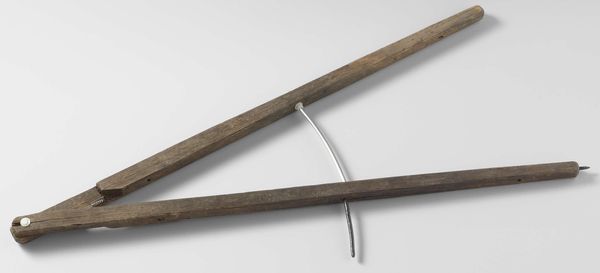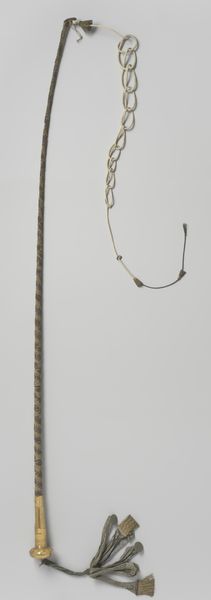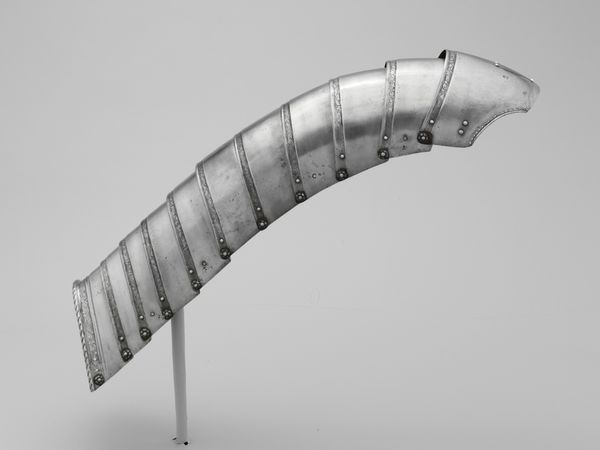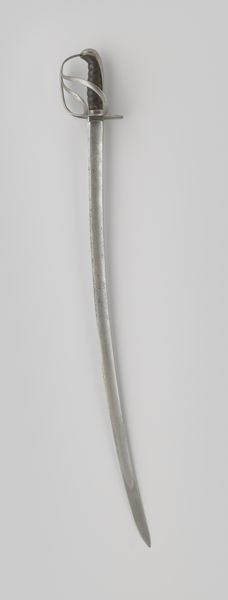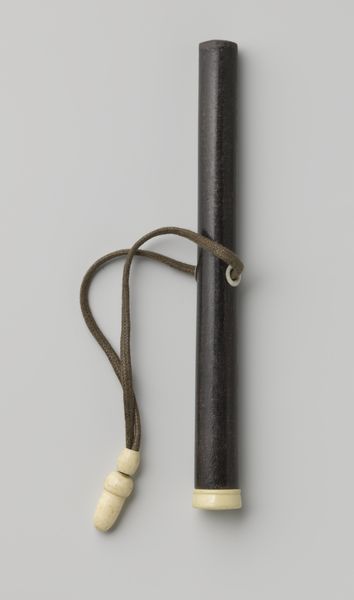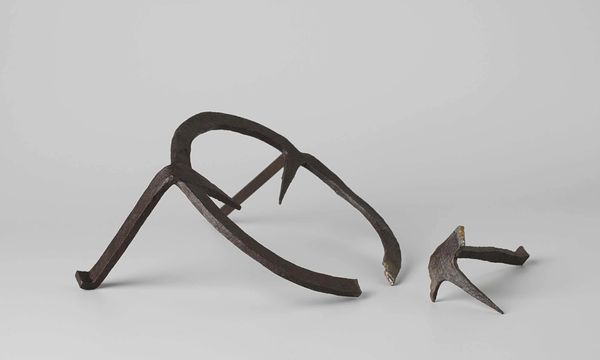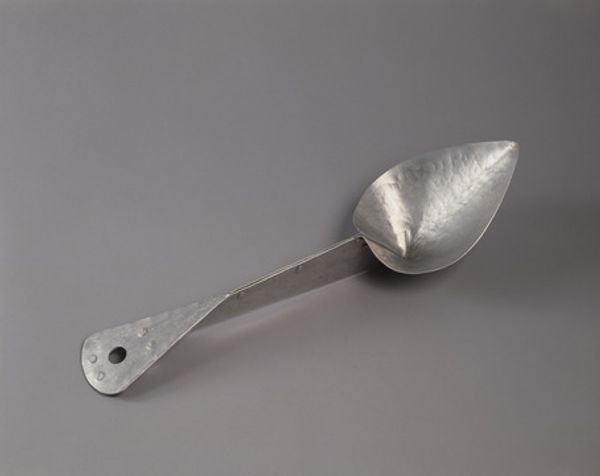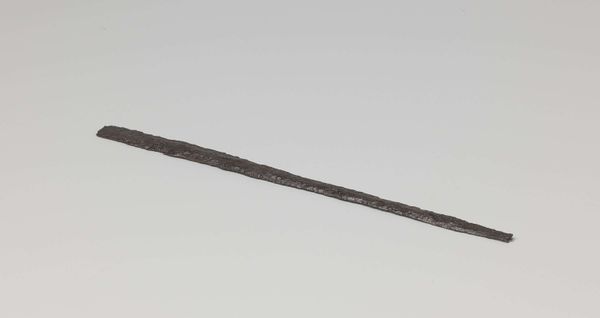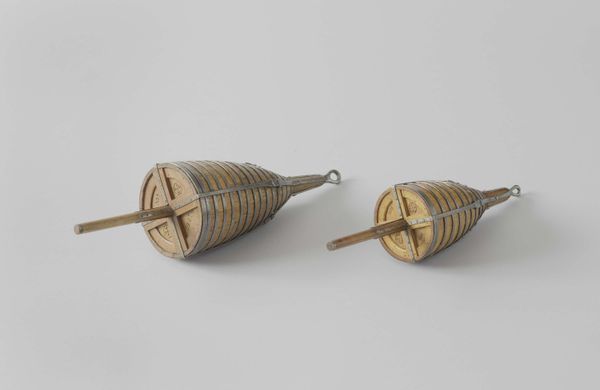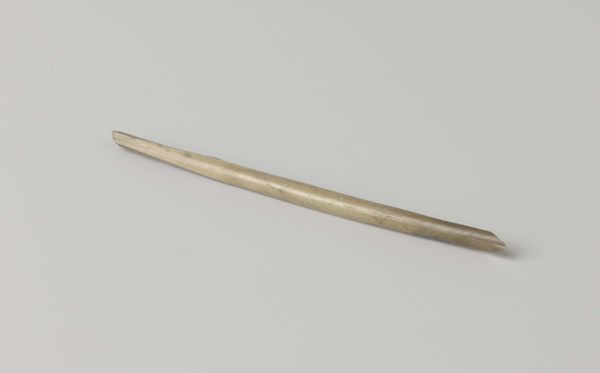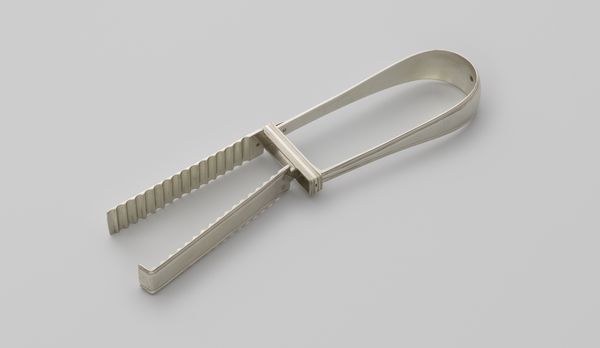
metal, sculpture, mobile
#
abstract-expressionism
#
metal
#
sculptural image
#
form
#
geometric
#
sculpture
#
mobile
#
modernism
Copyright: Alexander Calder,Fair Use
Curator: Alexander Calder's 1948 mobile, "RATTLE", made from metal, strikes me as unexpectedly delicate given its materials. Editor: Delicate is an interesting word choice! It’s true that the grays and off-whites of the circular metal pieces are quite muted. However, the sculpture feels, to me, more precarious than delicate. Its existence seems to hinge on perfect balance, which is compelling to consider. And balance within what context, I wonder? Calder created this not long after the end of the second world war; how did that shape his artistic and sociopolitical thinking? Curator: Indeed. Calder's positionality within the canon demands that we look at "RATTLE" in relation to the anxieties around mass destruction at the time, particularly concerning questions of material waste in the postwar years, a sort of debris hanging mid-air, so to speak. We cannot, of course, ignore the sculpture’s whiteness either: particularly as abstract expressionism served as a weapon of sorts for US cultural imperialism. The cold war reverberates even in Calder’s more seemingly innocent forms. Editor: Looking at it now, I can almost hear a primal rhythm in this work—a connection to ancient ritual. Notice how those disk-like components are layered. They echo scales or rattles, signaling both danger and perhaps a deeper sense of communication. Do you see the links to primitive totems here? To cultural archetypes about the cyclical nature of life, destruction, and renewal? I wonder if those smaller, dark dots have a particular significance? Curator: Well, as a white man making art during a very fraught historical moment, one must tread lightly in interpreting primitive symbolism... Still, one must concede, it *is* doing something more complex than just being pleasingly arranged shapes, isn't it? Editor: Perhaps what we see reflected in "RATTLE" isn't just post-war anxiety, but also an attempt—conscious or otherwise—to tap into something more profound. We have a composition of individual elements seeking harmony and equilibrium, which speaks to the enduring human quest for understanding and balance amid societal and cultural shifts. Curator: So, perhaps it *is* delicate in the end; just delicate with a heavy heart! Editor: A balance of tension. That’s the sign of great work, I’d argue.
Comments
No comments
Be the first to comment and join the conversation on the ultimate creative platform.
